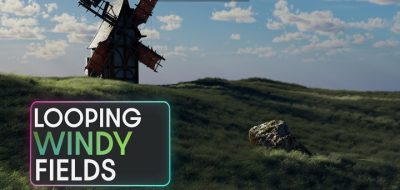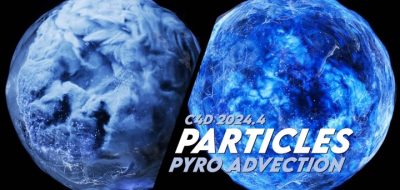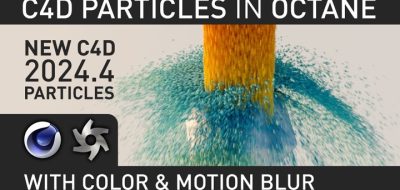Neil Shows His Unique Approach to Non-Photorealistic Rendering and How he gets Such Painterly 3D Work.
Not everything needs to be realistically (or hyper-realistically in some cases) rendered. Physically plausible shaders and rendering and non-photorealistic rendering have grown up together, side by side. Many 3D applications offer cell or toon shaders, along with a host of ways to render outlines either through contours, geometry, strokes or some other method. Still, a toon-shaded look can sometimes easily identify as computer generated. Hand-painting textures can offer a more natural and analog appearance to 3D work, but it is time-consuming.
Neil Stubbings has perfected another method that is mostly procedural and provides outstanding results looking like handcrafted work. The technique is so simple that it is sublime – It involves layering various noise elements in Cinema 4D, with a few other tricks. Check out Neil Stubbings’ talk at the IBC 2018 show, brought to you by Maxon’s Rewind.
To Move Forward You Must Look Back
So how does Stubbings get that astounding handcrafted look to his 3D work? It starts by dissecting what makes classic animation illustrations and backgrounds look so appealing. Stubbings decided that it all came down to the use of gradients. His first few projects worked with hand painting textures with that style – adding painterly gradations of tone generously. Even though the look is pretty good, Stubbings refining the process took it one step further.
Illustrative shading in Cinema 4D. Entirely procedural textures! @maxon3d @maxon_de @cinema4duk @maxonjapan pic.twitter.com/dcG7pwSefe
— Neil Stubbings (@neilstubbings) August 28, 2018
It’s All About the Noise
Using noise in texturing and look-development has a lot of benefits. It offers a great way to add variation and break up otherwise large areas, and it does this procedurally. Cinema 4D has an extensive library of noises with which you can choose and experiment. Overlaying noise is the premise for how Stubbings gets his painterly 3D look.
That Tree Tho.
Later in the IBC talks, Stubbings walks us through how that remarkable tree render came together. The bark for the main texture of the tree looks as if it were handmade by meticulously painting all the details. It turns out it is noise textures. The tree’s leaves which you would swear looked like paint daubs from a brush are created using Cinema 4D Hair module. Amazing results all around!
About Neil Stubbings:
Neil learned the craft of classic graphic design but soon after wandered off into the glamorous world of entertainment via an internship at a local TV station. Today, Neil works as a designer and director for moving images and shoots from an incredibly extensive arsenal of styles.






